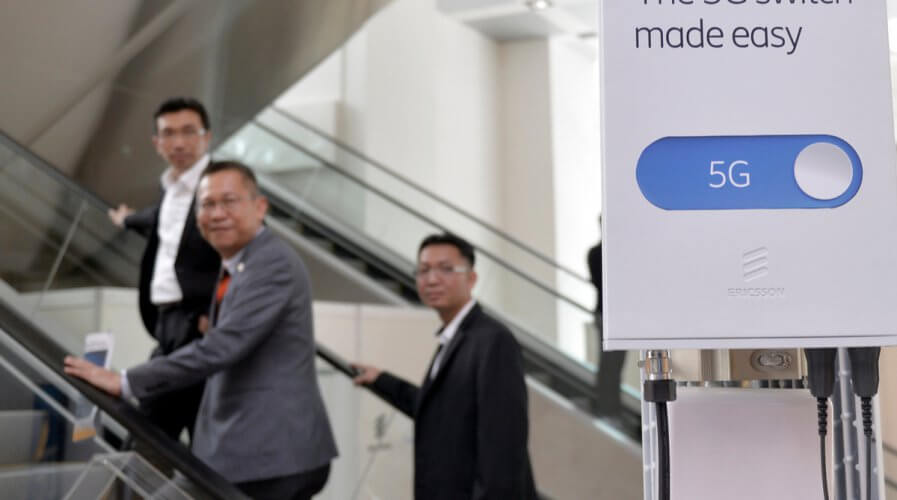
New report says 5G will drive significant enterprise value. Source: Shutterstock
AT Kearney: 5G to drive exciting opportunities for enterprises in ASEAN
SUBJECT matter experts have been talking about the importance of 5G and how it will transform the world around us for months now, but not much has been said in terms of the size of the opportunity.
According to a new study by AT Kearney (commissioned by Cisco), countries in the ASEAN region stand to gain a lot from 5G. For telcos alone, 5G could add six to nine percent to revenues from customers and boost revenues from enterprises by 18 to 22 percent by 2025.
“The expected rollout of 5G services comes at a perfect time for telecom operators. The usage of cellular data is growing rapidly as users consume increasing amount of services and content on their personal devices,” CISCO President ASEAN Naveen Menon told media at the launch event.
However, the report also highlights the fact that, in order to capture the opportunity that 5G brings, operators in the region will need to spend up to US$10 billion.
An assessment of regulatory support, government initiatives, and existing and projected investments by telcos suggest that Singapore will be the first country in the region to welcome 5G — as early as next year, followed by Vietnam, Thailand, Malaysia by 2021, and Indonesia by 2022.
Despite Singapore leading the foray into 5G, the biggest market opportunity for the technology lies in Indonesia according to the report owing to favorable factors such as its large population, high smartphone penetration, and growing digital economy.
Further, the study grouped different 5G use cases into four buckets — business to consumer – mobile broadband (B2C-MBB), business to consumer for fixed wireless access (B2C-FWA), business to business (B2B), and business to business to x (B2B2X).
Of the four, the enterprise opportunity or B2B opportunity is the most significant in the ASEAN region, especially in Indonesia (worth up to US$780 million), the Philippines (worth up to US$290 million), and Vietnam (worth up to US$155 million).
“Enterprises are looking to leverage the fourth industrial revolution (4IR), which is underpinned by artificial intelligence, IoT, 3D printing, advanced robotics, and wearables, to boost growth. The successful adoption of these technologies is largely dependent on the underlying connectivity.”
The report also lists some of the most interesting opportunities in the B2B space which revealed that although 5G enables interesting applications in agriculture, the technology is most effective in the services space followed by the manufacturing space.
Among the uses cases sampled by AT Kearney, those in security, retail, healthcare, mobility, utilities, and even manufacturing and agriculture could potentially be brought to life by technologies other than 5G such as Wi-Fi 6, NB-IoT, and LoRaWAN — but 5G is often the better technology given its sophistication and reliability.
To truly capitalize on the opportunities, however, Cisco and AT Kearney believe that telcos and enterprises need to nudge regulators to start planning and strategizing for 5G roll-outs, allowing them to leverage it to enable a new era of digital connectivity and transformation in the ASEAN region.
“The overall potential of 5G rollout in ASEAN is substantial. However, to live up to the full potential, the region will need to address the main challenges. This will require a coordinated effort from all stakeholders — regulators, operators, and enterprises,” said AT Kearney Partner Nikolai Dobberstein.
“Given the ecosystem challenges and the large value at stake, regulators will play a central role. Among the key issues that regulators would need to take the lead on are: ensuring near-term spectrum availability, fostering infrastructure sharing and nurturing the development of national cybersecurity capabilities across the region.”
While the report successfully quantifies the opportunity, it’s comforting to know that telcos in the ASEAN are aware of the opportunity that 5G brings and are already in the early phases of trials — and embarking on discussions with regulators to help accelerate roll-outs in Singapore, Malaysia, Thailand, and the rest of the region.
READ MORE
- The criticality of endpoint management in cybersecurity and operations
- Ethical AI: The renewed importance of safeguarding data and customer privacy in Generative AI applications
- How Japan balances AI-driven opportunities with cybersecurity needs
- Deploying SASE: Benchmarking your approach
- Insurance everywhere all at once: the digital transformation of the APAC insurance industry


